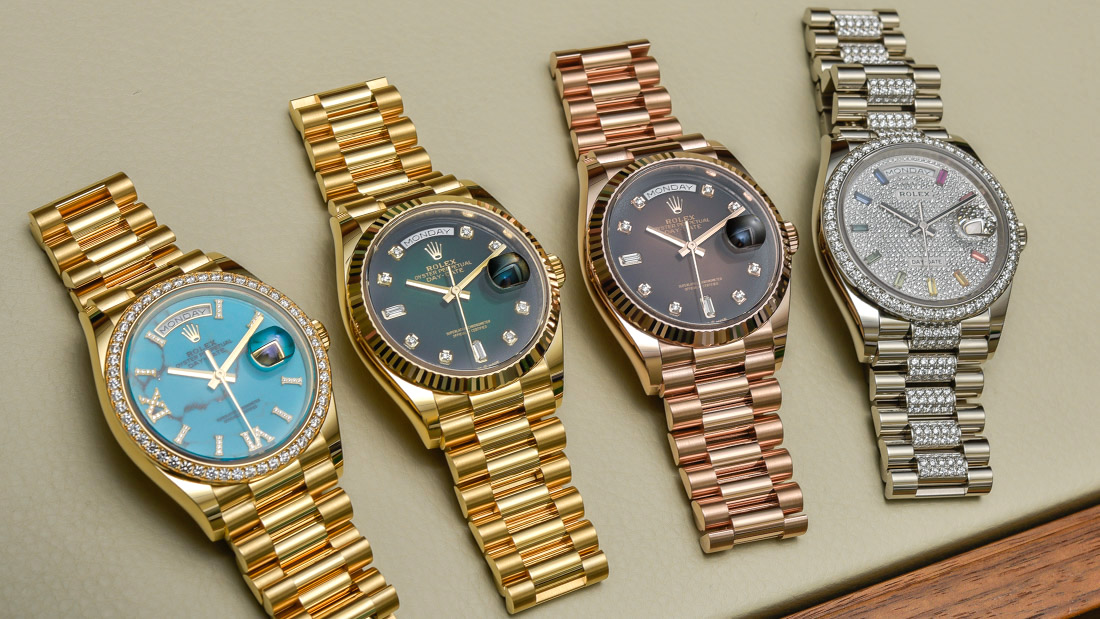
At BaselWorld 2019, the Rolex Day-Date 36 finally got to catch up with its big brother, the Day-Date 40. For four years, those privileged with their eyes and wallets set at the Day-Date 36, had to wait for this high-prestige range to receive all those useful and impressive technical updates that the 40mm wide version had had all along. With 2019, these technical improvements, some minute changes to the case, as well as notable new dial options have all arrived to the Day-Date 36, along with some notable limitations, as well.
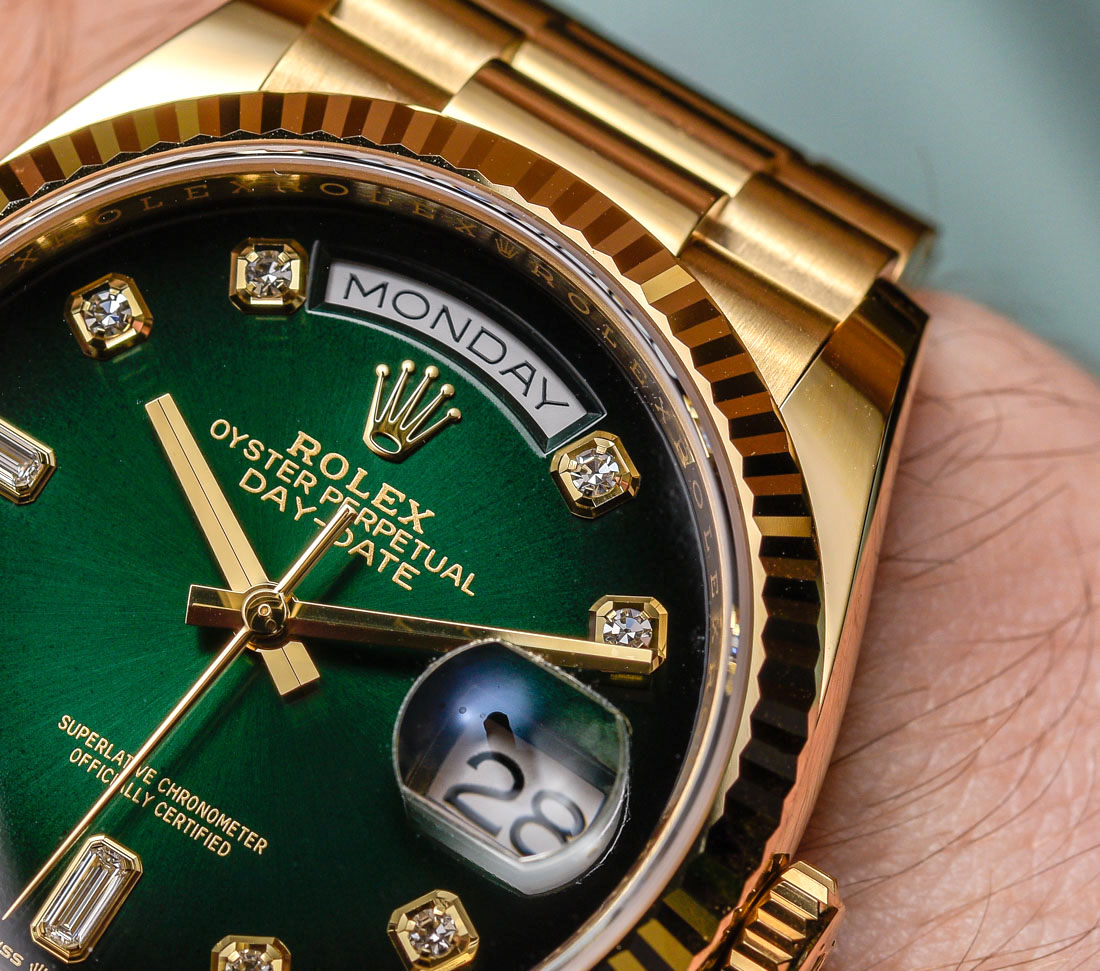
It was back in 2015 that we debuted the new Day-Date 40 that, in turn, first introduced Rolex’s new generation of 32xx calibers, Superlative Chronometer -2/+2 second daily accuracy tests, and the ceramic inserts in between the precious metal links of its President bracelet. Those, in a nutshell, made for a major product update, and it was just a matter of time that the 36mm version received them. On that note, I had expected the Day-Date 36, “the be all, end all” prestige watch of Rolex, to not lag behind quite so long — but it has to be said that four years, by Rolex standards, is but a blink of an eye.
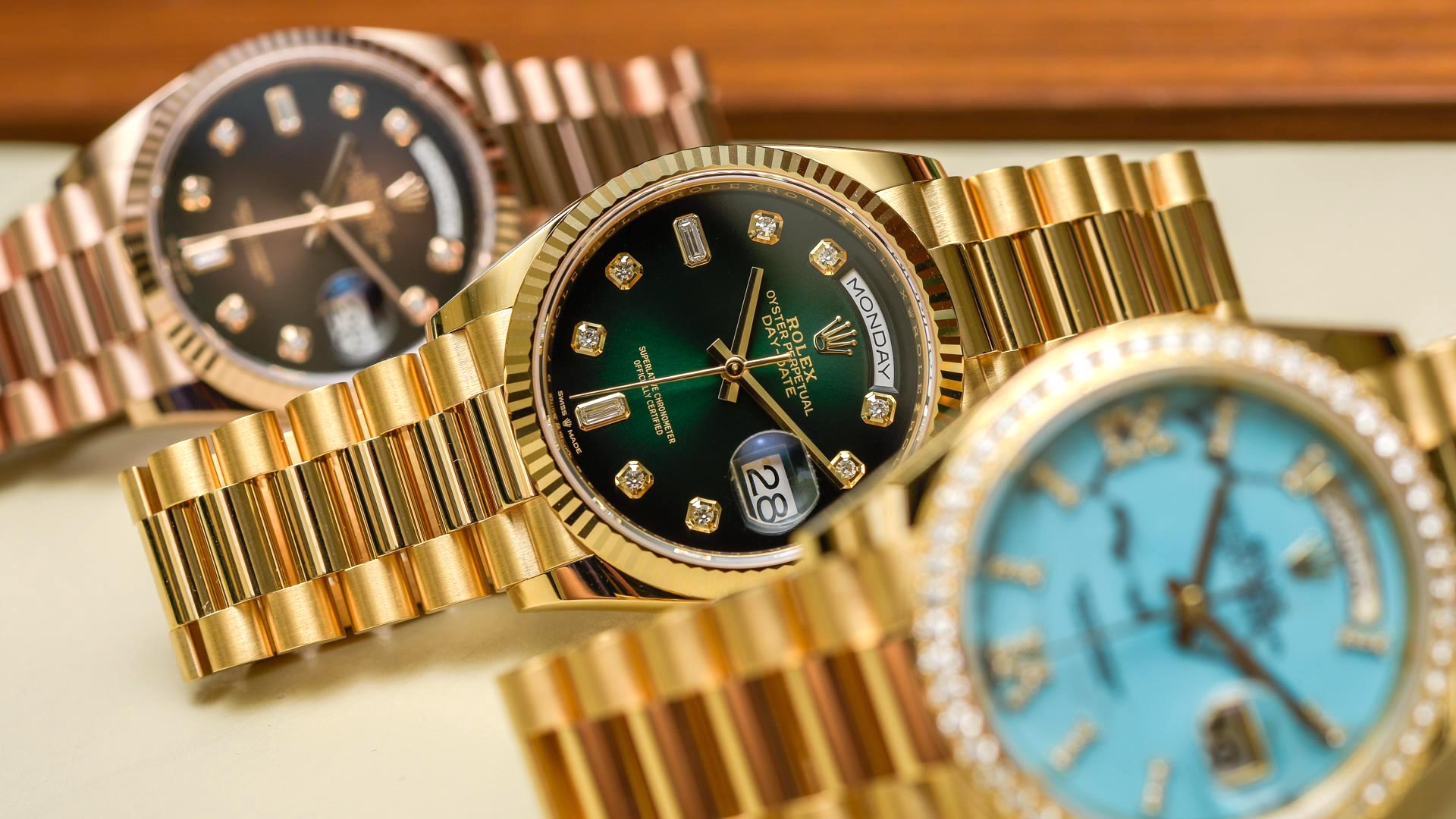
We’ll get to discussing those technical updates soon, but I’ll begin with what I think actually is a lot more important to anyone looking to buy a Day-Date 36 in the foreseeable future — and that is configurability. For the time being, the new Day-Date 36 is not available in platinum — again, a real head-scratcher and something that will surely have to be rectified soon. For now, it can only be 18k yellow gold, white gold, or Everose gold.
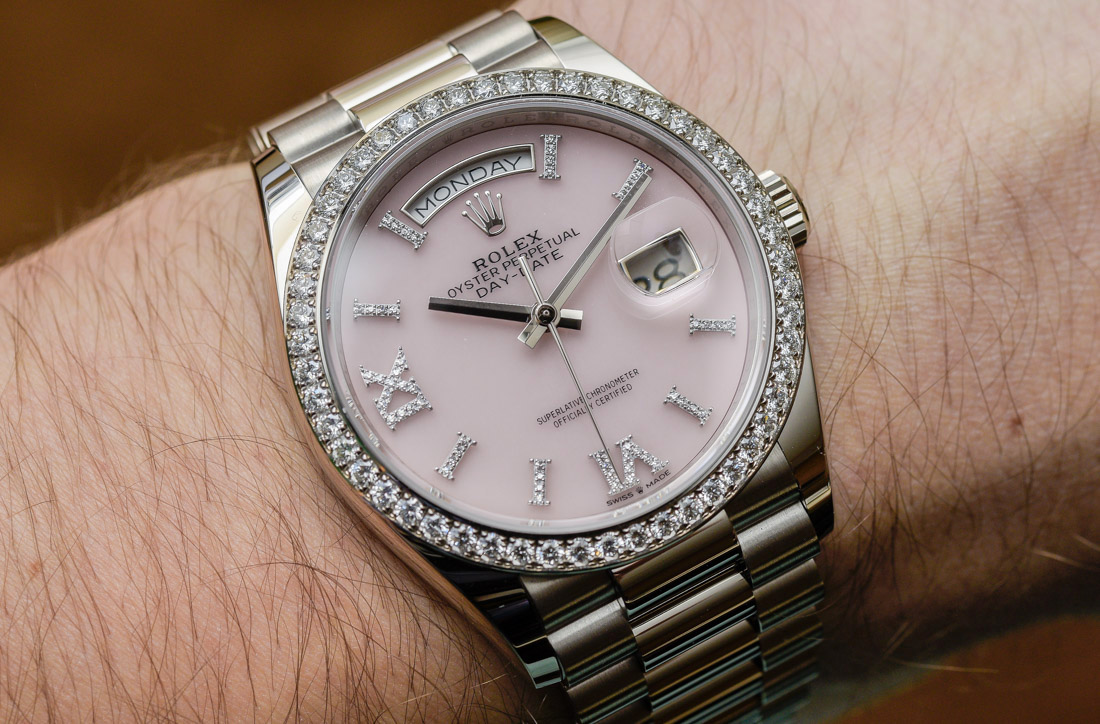
Another important thing to note is that, with this update, all previous Day-Date 36 dial options are gone with the wind. We have new ones, three for the Everose, four for the white gold, and six for the yellow gold version — plus all three metals have an extra option of a pavé set dial with “rainbow” sapphire indices. That, I think, is a bummer, as many enticing dial options had come to be for the Day-Date 36 over the years.
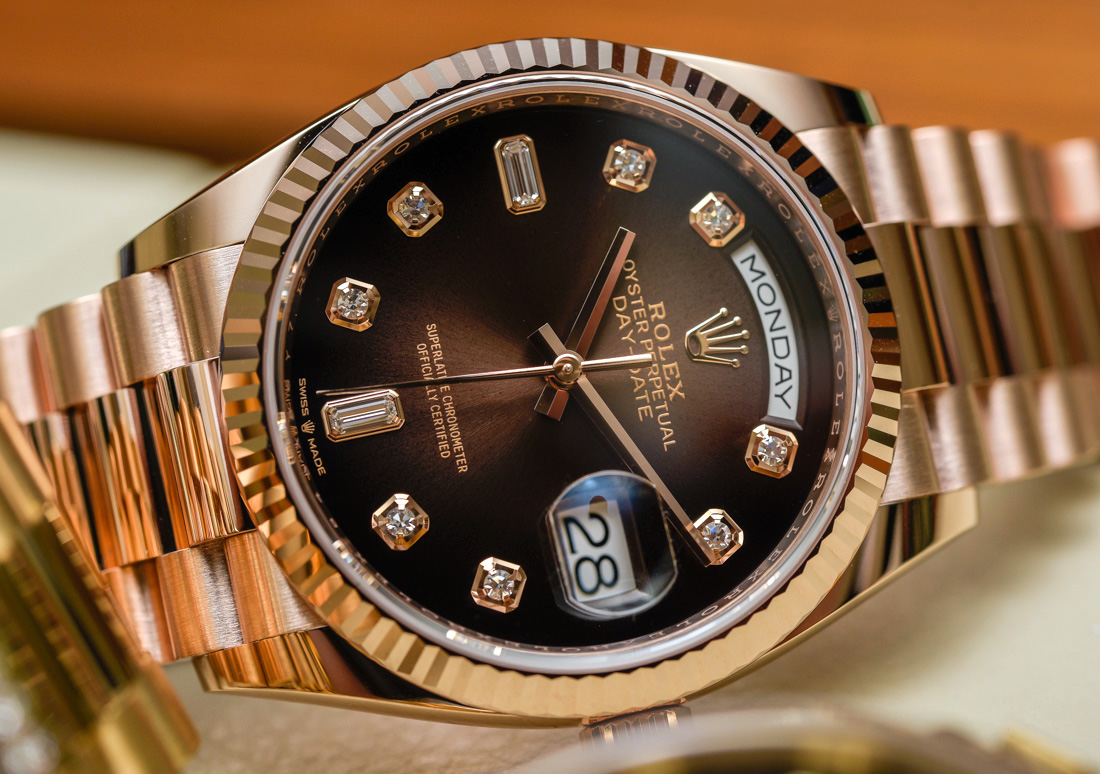
All the rage this year seems to be the “fumé,” “smoked,” “vignette” or, as Rolex likes to call them, “ombré” dials. These colorful dials are darker around their edges and lighter by their center — H. Moser & Cie is often credited for bringing this style to light, although one must not forget that this was a popular design choice a number of decades ago, all the same. On a personal note, I have yet to grow used to these vignette dials on the Day-Date 36. There somehow is not enough room on the Day-Date 36’s — mind you, beautifully proportionate — dial. The Day-Date 40, by contrast, often looks vast, like a saucer, and that certainly would have been my choice to introduce this style.
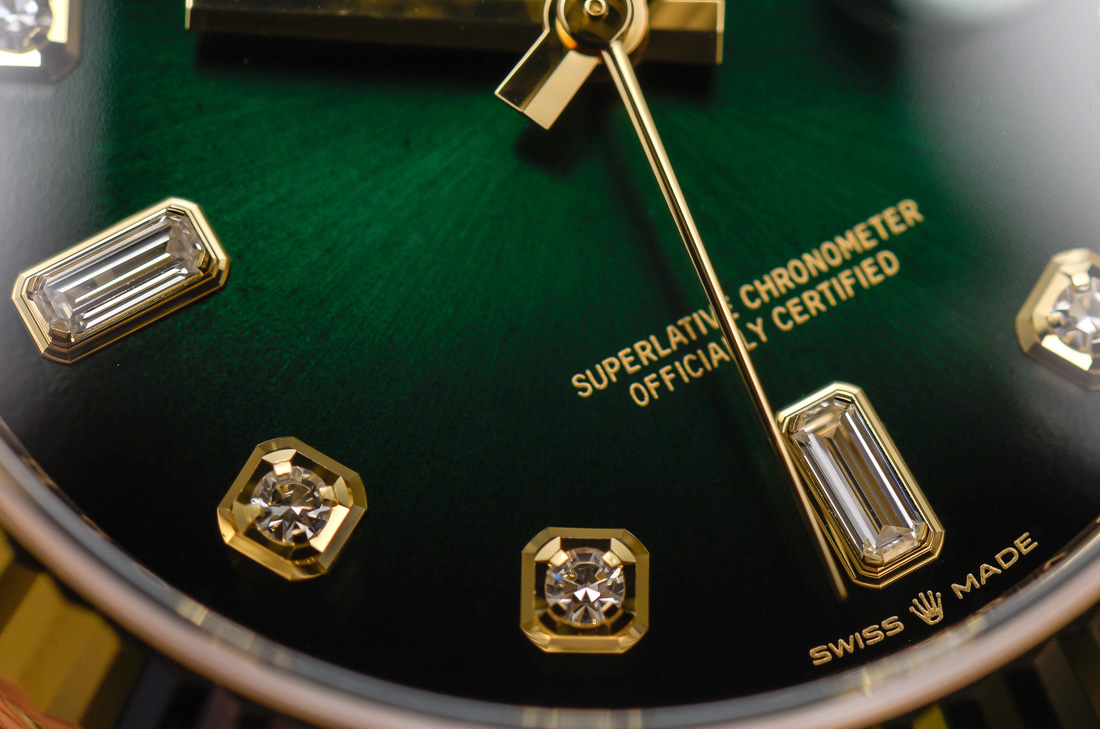
More to the point, this transitional execution doesn’t look elegant — not to me, at least. It is a brand new watch that somehow looks old and dated. Whereas the presentation of the Day-Date 36 itself, meaning the case, fluted bezel, and President bracelet, are as timeless as a Roman marble bust, this vignette effect reminds me of the cheap plastic cover on an ’80s Rolodex. Needless to say, the fact that I am yet to get it doesn’t mean others won’t.
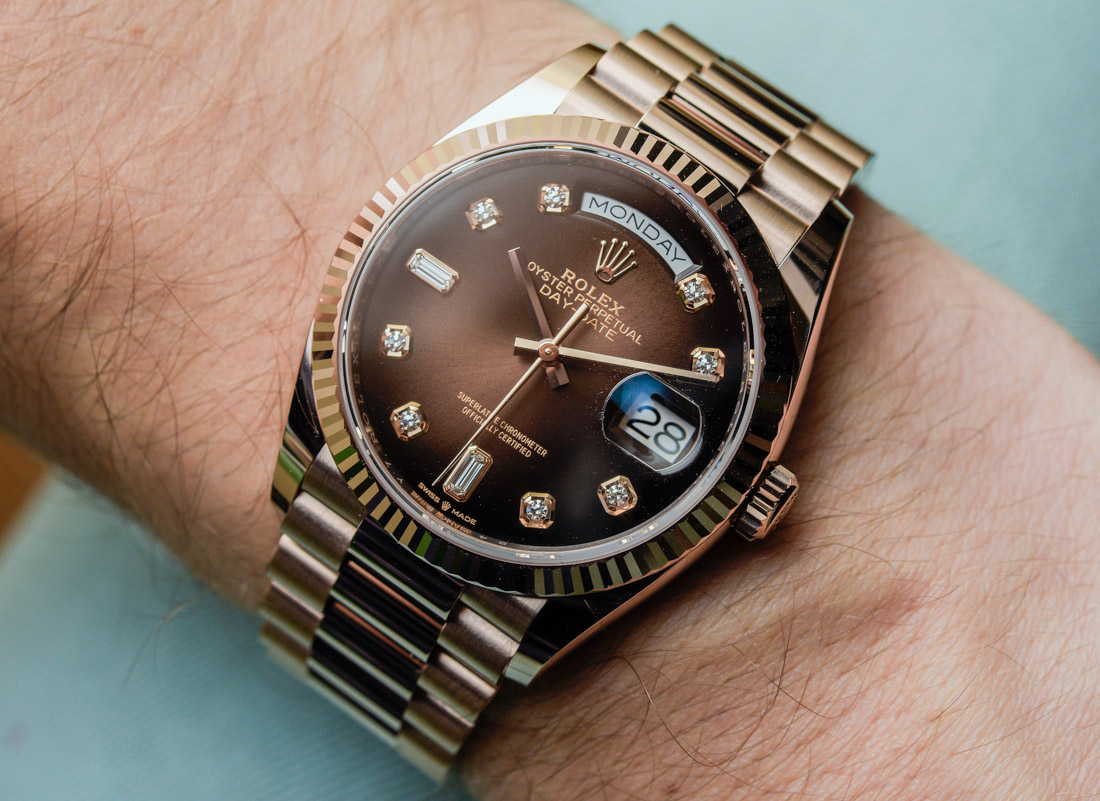
A number of previous Day-Date 36 models suffered from at least some legibility issues, and these new “ombré” dials don’t appear to help with that. The hands often turn dark in their reflectivity; pair that with the transitional colors of the dial, and you have a camouflage effect, which really isn’t what you want if it’s legibility you’re after. I am an absolute sucker for a Rolex with baguette-cut diamond hour markers — and diamond indices in general — and yet, here, they appear to strangely blend in.
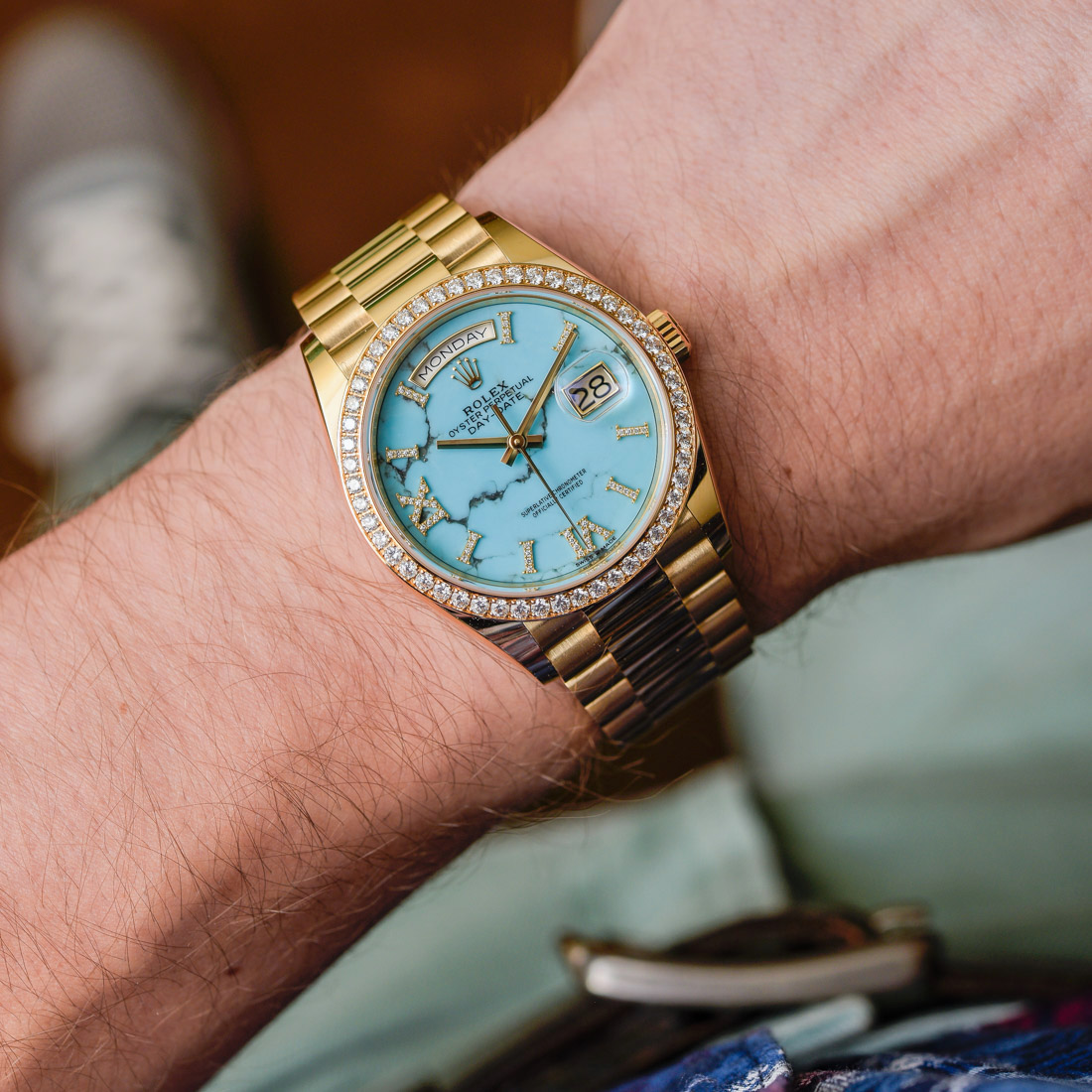
There are a few stone dial options — for a hefty premium of around €8,000 in Europe, which equals around $9,000 in the US. The 18k white gold version gets a pink opal dial, while the 18k yellow gold, as seen above, receives a “slightly veined turquoise decorative stone dial” (Rolex’s words for it). The indices are diamond-set — and we know these tiny diamonds always make for a substantial premium on a Rolex watch. I’m a fan of the color of turquoise and the way it generally looks on watches, but on this occasion, both this and the pink opal look distinctly feminine — and I do kind of wish at least one of these stone dials were for men.
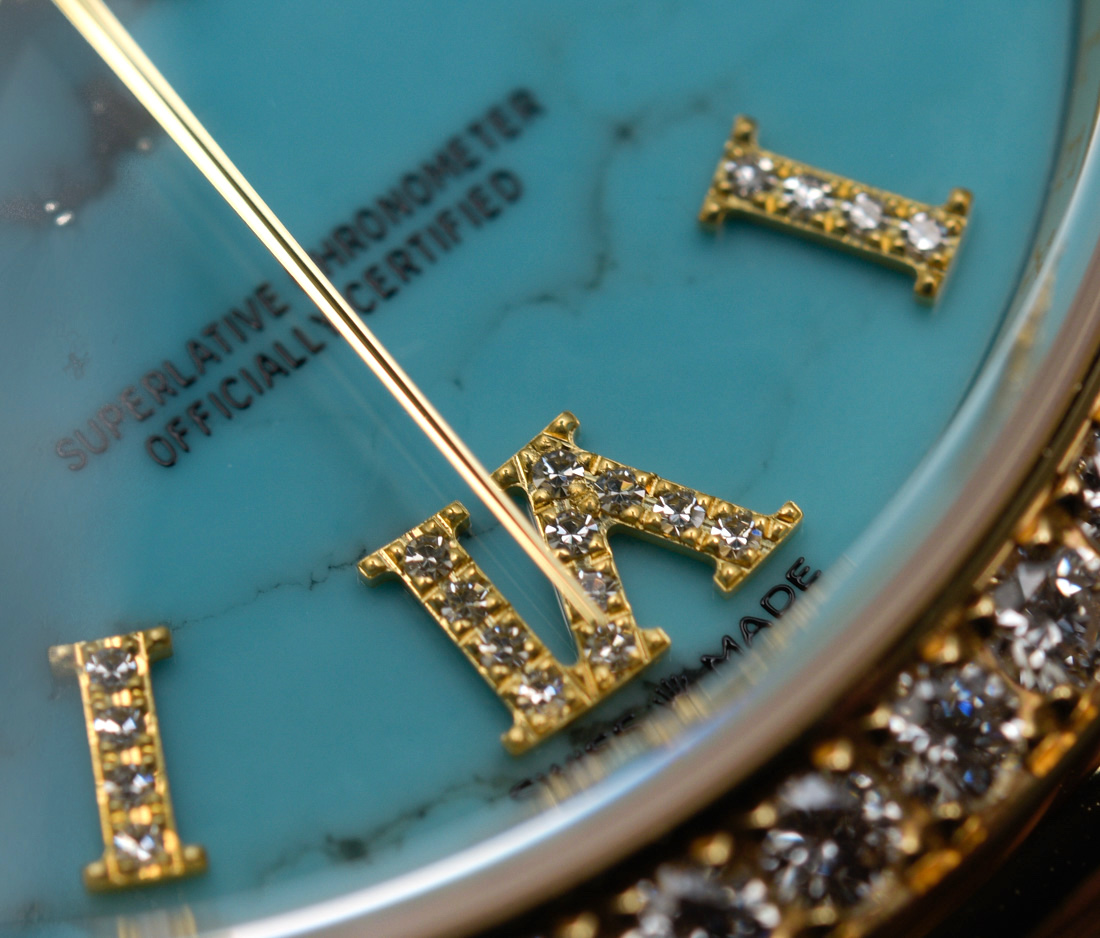
As I said, the yellow gold version has the greatest variety of dials — champagne-colored, dark gray and even white mother of pearl are available — whereas the other two gold alloys are, more or less, left hanging for now, with very limited color options.
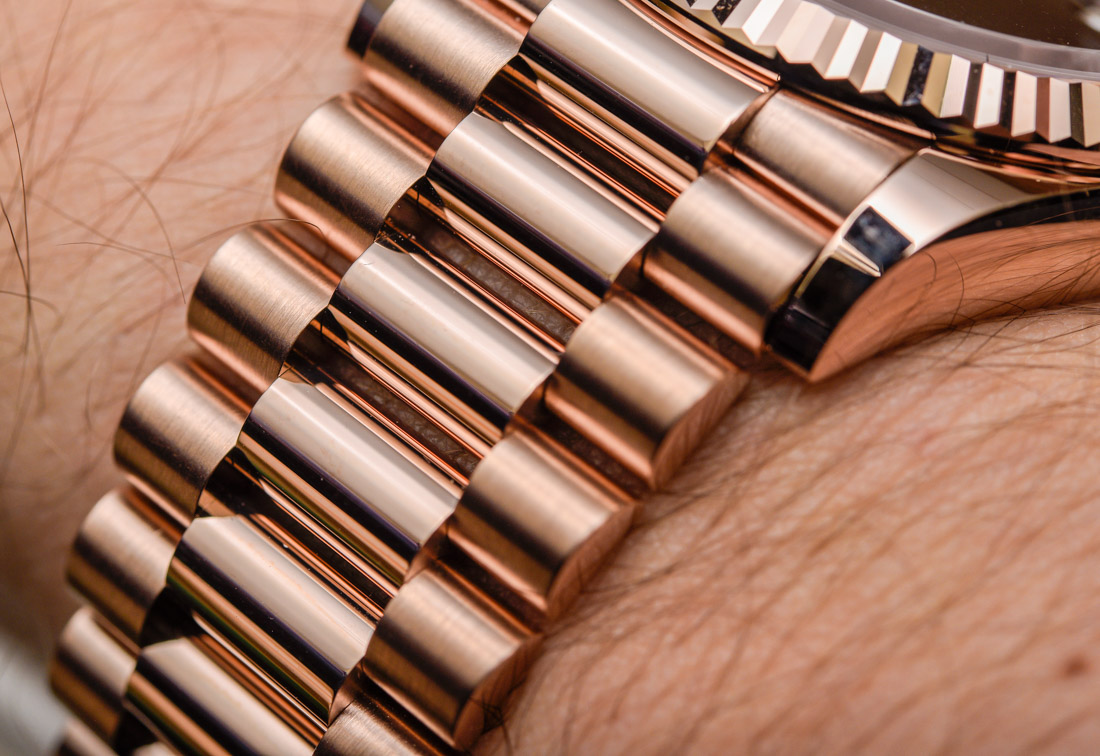
The President bracelet on the Day-Date 36 has, at last, received ceramic inserts. Rolex introduced these, as I said, with the Day-Date 40 back in 2015, the idea being that these super-hard ceramic inserts would save the links from becoming sticky — allowing for a more comfortable wear — and also eliminate the stretching of the bracelet. If you don’t know what bracelet stretch is, just take a look at any vintage Rolex bracelet that hangs loose — its pins and holes are so worn out that the bracelet isn’t quite as tight and robust as it once was. As far as I know, to date, only the President bracelet — now in its every iteration — has this upgrade, while precious metal Oyster bracelets don’t.
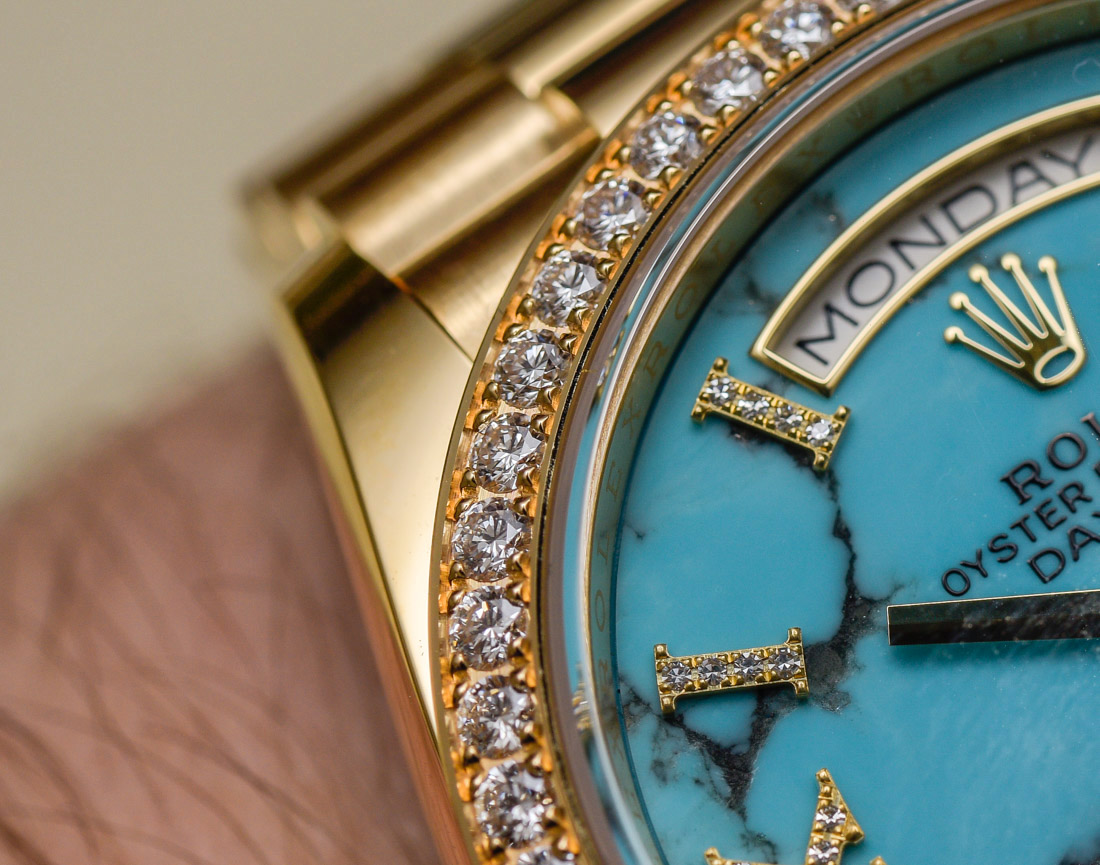
Rolex also mentioned (not outright, but in its mysterious ways) that they had performed some minute alterations to the case profile. God knows I tried, but I simply couldn’t pull any specific information on this from them. Ahh, Rolex, and its infamous secrecy. What they don’t know, though, that I do, is that I have, in fact, been teasing the idea of selling some of my (shamefully) no longer worn watches and, at some point in the future, buying a Day-Date 36. This allowed me to do a fair bit of research, go hands-on with previous generation Day-Date 36 models and get a feel for them.
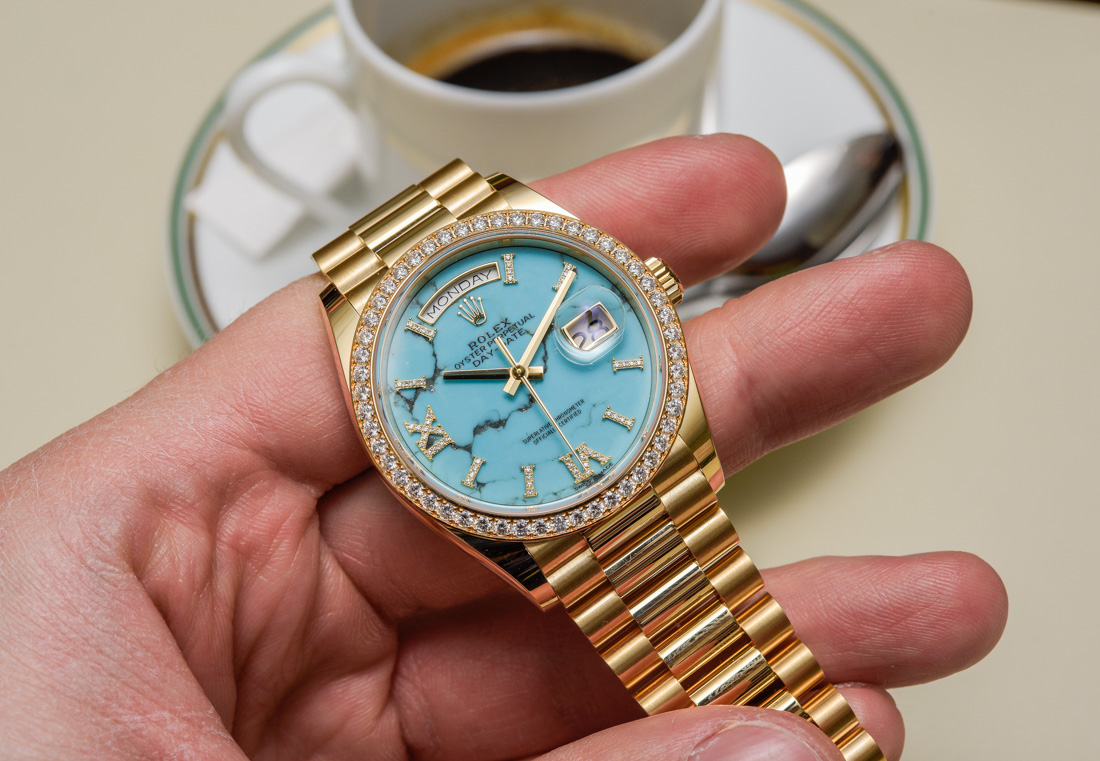
And yes, the 2019 Day-Date 36 does look and feel minutely different. I could be wrong, but I think recent history taught us that when Rolex does something to its cases, as bloody impressive as the end result might be, said modifications are performed, in part, for the sake of simplifying the manufacturing of these cases. Sure, the effort to implement a new process is often gargantuan (and often stuff only Rolex could venture to do), but in the end, the new-generation case often looks ever so slightly more simple. Just think of the “super case” on the Submariner that has done away with the polished edge and brushed profile and replaced it with one large polished profile.
